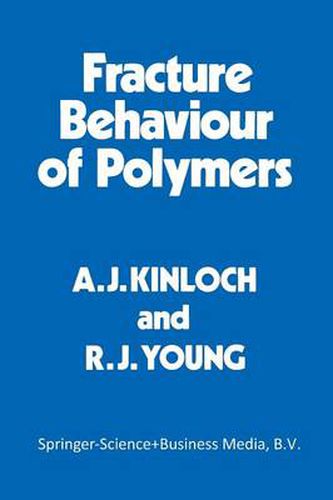Readings Newsletter
Become a Readings Member to make your shopping experience even easier.
Sign in or sign up for free!
You’re not far away from qualifying for FREE standard shipping within Australia
You’ve qualified for FREE standard shipping within Australia
The cart is loading…






This title is printed to order. This book may have been self-published. If so, we cannot guarantee the quality of the content. In the main most books will have gone through the editing process however some may not. We therefore suggest that you be aware of this before ordering this book. If in doubt check either the author or publisher’s details as we are unable to accept any returns unless they are faulty. Please contact us if you have any questions.
Over recent years there has been a tremendous upsurge in interest in the fracture behaviour of polymers. One reason for this is the increas ing use of polymers in structural engineering applications, since in such circumstances it is essential to have as complete an understanding as possible of the polymer’s fracture behaviour. This book is designed to meet the requirements of those who need to be informed of the latest developments in the field of polymer fracture. It is written particularly for research workers but it should also prove invaluable for advanced students taking final-year undergraduate or postgraduate courses. The main emphasis is upon the use of fracture mechanics in the study of polymer fracture but this approach is then developed to cover the micromechanisms of the fracture process. Particular prominence is given to the relationship between structure, mechanical properties and the mechanics and mechanisms of fracture. The first chapter is a brief introduction which has several aims. One is to introduce polymers to the reader who does not have a strong background in the subject and another is to provide background material that will be used at later stages. The book is then split into two main parts: the first deals with the mechanics and mechanisms whilst the second is concerned with materials. In Part I phenomena such as molecular fracture, fracture mechanics, shear yielding and crazing are covered from a general viewpoint.
$9.00 standard shipping within Australia
FREE standard shipping within Australia for orders over $100.00
Express & International shipping calculated at checkout
This title is printed to order. This book may have been self-published. If so, we cannot guarantee the quality of the content. In the main most books will have gone through the editing process however some may not. We therefore suggest that you be aware of this before ordering this book. If in doubt check either the author or publisher’s details as we are unable to accept any returns unless they are faulty. Please contact us if you have any questions.
Over recent years there has been a tremendous upsurge in interest in the fracture behaviour of polymers. One reason for this is the increas ing use of polymers in structural engineering applications, since in such circumstances it is essential to have as complete an understanding as possible of the polymer’s fracture behaviour. This book is designed to meet the requirements of those who need to be informed of the latest developments in the field of polymer fracture. It is written particularly for research workers but it should also prove invaluable for advanced students taking final-year undergraduate or postgraduate courses. The main emphasis is upon the use of fracture mechanics in the study of polymer fracture but this approach is then developed to cover the micromechanisms of the fracture process. Particular prominence is given to the relationship between structure, mechanical properties and the mechanics and mechanisms of fracture. The first chapter is a brief introduction which has several aims. One is to introduce polymers to the reader who does not have a strong background in the subject and another is to provide background material that will be used at later stages. The book is then split into two main parts: the first deals with the mechanics and mechanisms whilst the second is concerned with materials. In Part I phenomena such as molecular fracture, fracture mechanics, shear yielding and crazing are covered from a general viewpoint.